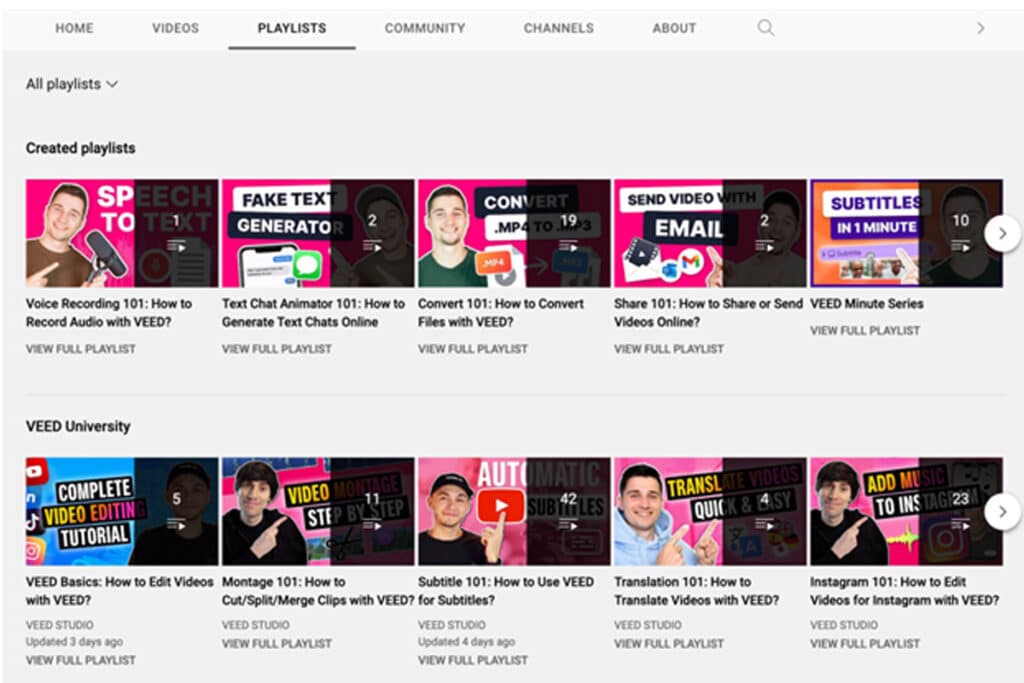Let’s say you’re trying to get your product in front of as many people as possible. You’ve researched and found out YouTube has over two billion users. That’s a lot of potential customers!
YouTube is the second most popular search engine, following Google. And according to a study, 90 percent of their respondents say they’ve discovered a new product or service on YouTube.
Now, there are many methods to leverage YouTube for your business. You could run ads or work with influencers who will promote your product for you. But there’s one method that’s often overlooked: using YouTube SEO.
What is YouTube SEO
Imagine you create and edit great videos about your product. How do you ensure the right people are seeing your videos? Or that they’re being seen at all? This is where YouTube SEO comes in.
YouTube SEO is the practice of enhancing your video’s presence so they rank higher in YouTube search results. The higher your video ranks, the more likely people will find and watch it. This can lead to increased views, subscribers, and even sales.
And since Google owns YouTube, optimizing your videos can also help them rank higher in Google search results. Meaning you have a double opportunity to reach your target audience.
How to Optimize Your YouTube Videos
YouTube SEO is not a one-time thing. It isn’t enough to simply post a video and hope for the best. You need to be proactive and make sure your videos are optimized from start to finish. To help you with that, consider these hints and tips:
1. Choose the right title
Think about what your video is about and what keywords you want to target. This will help you develop a title that accurately reflects the content of your video.
A catchy or clickbaity title may bring in views initially, but if the video doesn’t deliver on its promise, viewers will likely be disappointed.
Lastly, keep it short and sweet. Long or complicated titles can be off-putting for potential viewers.
2. Write a good description
The description should give potential viewers an idea of your video and why they should bother watching it. Remember to incorporate your target keywords into your description naturally.
You may also consider including links to your website or blog in the description to drive traffic back to your site. This will also encourage interested customers to learn more about your product or service.
3. Use tags correctly
 YouTube allows you to add tags when you upload a video. You should take advantage of this by tagging your videos with relevant phrases that viewers might search.
YouTube allows you to add tags when you upload a video. You should take advantage of this by tagging your videos with relevant phrases that viewers might search.
Tags act like keywords for your video. They help YouTube understand your video and categorize it accordingly. This makes it easier for potential viewers to find your videos when searching for something specific.
Choose 3-5 relevant tags for each video, and ensure they are included in your upload’s title and description section.
4. Add subtitles to your video
Subtitles help viewers who are deaf or hearing-impaired to follow along with the audio. It can also be useful for viewers who speak a different language or have difficulty understanding accents.
SEO-wise, adding subtitles in your video gives YouTube another opportunity to index it for relevant keywords. That means that when people search for those scripts, your video is more likely to show up in the results.
5. Add annotations
Annotations are clickable links that you can add to your videos. They can be used to drive traffic back to your website or promote other videos on your YouTube channel.
Adding annotations helps viewers navigate your videos and find the information they’re looking for. The key is to utilize them wisely and sparingly. Only annotate the most important parts of your videos, and make sure its relevant to the content.
6. Create playlists for your videos
 If you have a series of videos on the same topic, consider putting them in a playlist and tagging it accordingly. This will make it easy for YouTube to understand the connections between your videos and increase the chances that they will appear in search results together.
If you have a series of videos on the same topic, consider putting them in a playlist and tagging it accordingly. This will make it easy for YouTube to understand the connections between your videos and increase the chances that they will appear in search results together.
Playlists also encourage viewers to watch more than one of your videos, increasing the amount of time they spend on your channel.
7. Add a custom thumbnail
This tiny image is the first thing viewers see when they come across your video. It can greatly impact whether or not they decide to watch.
A good thumbnail is like a Hollywood movie poster: it’s eye-catching, tells you what the video is about, and makes you want to see more.
Start by considering the size and shape of your thumbnail. Then, think about the colors and images you use in your thumbnail. Use bright colors and high-contrast images to grab attention, and include text that clearly communicates what your video is about.
8. Include a Call to Action
CTAs are designed to encourage viewers to take a specific action, such as subscribing to a channel, visiting a website, or making a purchase. As an expert salesman knows how to close a deal, an effective CTA can nudge a viewer in the right direction.
You can increase your website traffic, conversion rates, and overall ROI by providing a clear and concise call to action. For example, if you’re marketing a product, you might include a CTA at the end of your video telling viewers where they can buy it.
However, it’s important to strike the right balance – too much pressure may cause viewers to click away.
Measuring the Success of Your SEO Efforts
Just like any other business investment, you want to know if your SEO efforts are paying off. The first step is to clarify your goals. Some common goals for a video marketing campaign might be:
- Increasing brand awareness
- Generating leads or sales
- Growing your YouTube channel
- Improving SEO rankings
Once you know what you’re trying to achieve, you can start measuring your progress. There are several metrics you can use, but some of the most important are:
- Views: How many people are watching your videos?
- Watch time: How long are viewers watching your videos?
- Engagement: What percentage of viewers are taking action after watching your videos (e.g., subscribing to your channel, visiting your website, etc.)?
- Shares: How often are viewers sharing your videos with others?
- Traffic: How much traffic is your video driving to your website?
You can track these metrics using YouTube Analytics or Google Analytics. Alternatively, many video marketing tools offer built-in analytics that make it easy to track your progress.
Wrapping It Up
No question asked; YouTube is a powerful marketing tool. But if you want to really get the most out of it, you need to treat it like any other marketing channel and invest the time and effort required to make it successful.
Ready to get started? The outlined tips are a great starting point. Implement them into your video marketing strategy and see how they can help you achieve your business goals.

Jennesa Ongkit
Jennesa Ongkit is a content writer from VEED.IO, an online video editing platform. Jennesa is also an expert in social media marketing and has worked with clients in various industries, including e-commerce, education, and technology.







-300x158.png)


